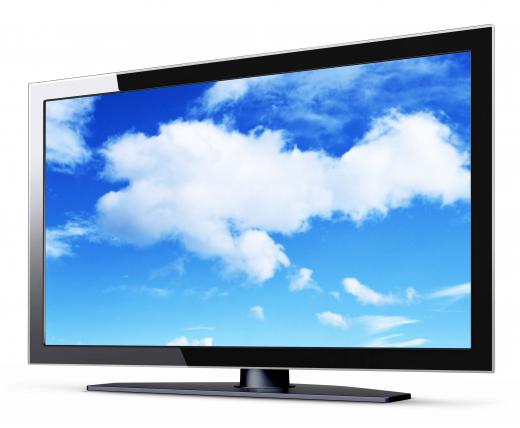At EasyTechJunkie, we're committed to delivering accurate, trustworthy information. Our expert-authored content is rigorously fact-checked and sourced from credible authorities. Discover how we uphold the highest standards in providing you with reliable knowledge.
What is a TFT LCD Monitor?
A TFT LCD monitor is a type of flat-panel display that works as either a computer monitor or as a display for a TV. TFT LCD is short for thin film transistor liquid crystal display. Most of the time, manufacturers shorten the term for such displays to LCD, dropping the TFT from the name since this abbreviation simply refers to the type of LCD monitor, and TFT is easily the most popular type.
The thin film transistor consists of a thin piece of a semiconductor material applied over a glass substrate. Each pixel has its own transistor along with the liquid crystal material. The liquid crystal material exhibits properties of both a liquid, because of its ability to change quickly, and a crystal, because of its ability to remain in an arranged position. The transistor applies a voltage to the pixel, determining its color and intensity. A pixel is short for picture element, and the tiny pixels blend together to create the image on a display.

Another name for a TFT LCD monitor is an active-matrix LCD. Although TFT is not the only active-matrix technology, it is overwhelmingly the most common type, causing some people use the two terms interchangeably. A TFT is only a small part of an active-matrix LCD, however. The term active-matrix refers to the ability of the monitor to control individual pixels and switch them quickly.

Active-matrix LCDs differ from passive-matrix LCDs in several ways. They have a high refresh rate, high contrast, and high response times, at least when compared to passive-matrix displays. A passive-matrix LCD is commonly found in a calculator display or a digital wristwatch, where the display contains a limited number of segments and does not require full color. Active-matrix displays usually are high-resolution, full-color LCDs, and they include those found in computer displays, cell phones, and TVs.
A few different types of thin film transistor technology may be are found in a TFT LCD monitor. The most common for computer displays and TVs is called a twisted nematic (TN) display, which features quick response times. TN displays do not excel in the areas of screen viewing angle and color reproduction, however. Another common monitor technology is IPS, short for in-plane switching. An IPS display offers great color and good viewing angles, but its refresh rates are slow.
AS FEATURED ON:
AS FEATURED ON:












Discussion Comments
(For those who are unfamiliar with ‘burn-in’, it is a term to describe a ghost image that is “burnt” into the screen as a result of being displayed too long in the same location)
@anon33562: LCDs are less susceptible to the ‘burn in’ effect than CRTs or Plasma screens are. Still, whatever type of screen you have, it is a good idea to always use a screen saver and set the monitor to shut off after a certain period of time. Many modern display screens come equipped with a built in protection feature that rotates an image very slightly, thereby making sure no pixel is stuck on the same color.
What about relative freedom from burning? Suppose "peak white" is constant & at constant position -- what harm would befall a TFT LCD? Compare the relative harm to other displays -- such as traditional CRT.
Post your comments